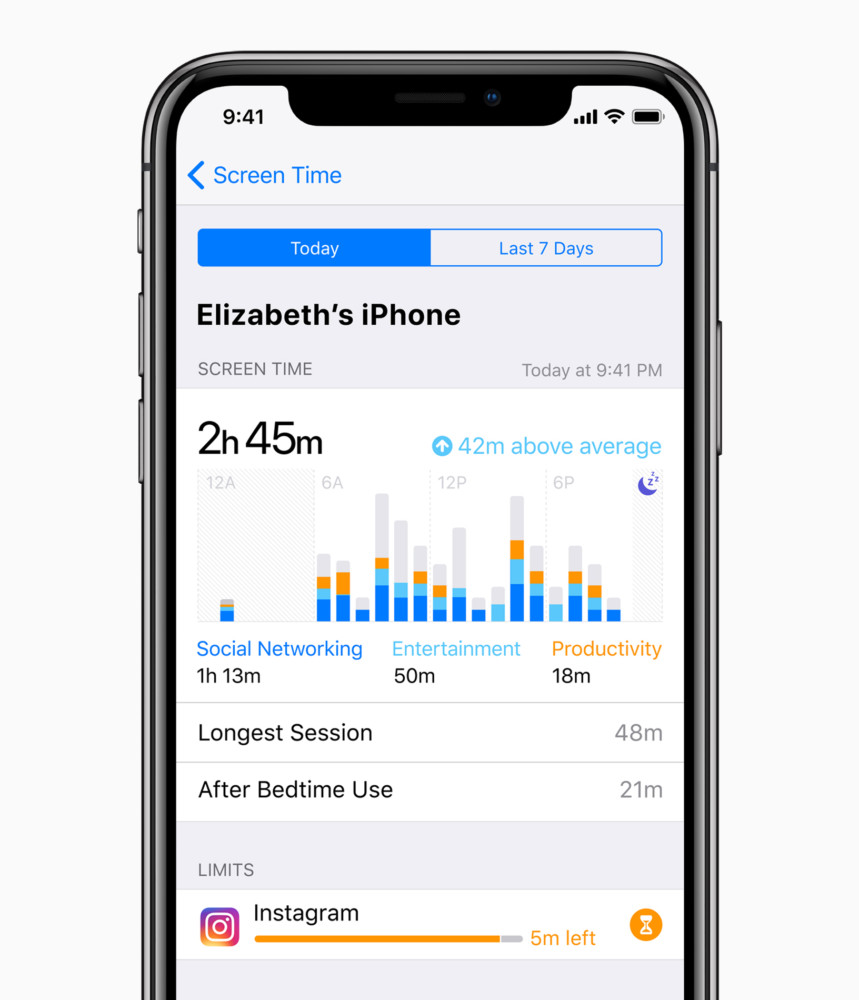By Catherine Price
Los Angeles Times
WWR Article Summary (tl;dr) The iphone “Screen Time” feature automatically tracks how often you pick up your phone and how much time you spend on each app.
Los Angeles Times
Screen Time, part of the operating system that iPhone owners began downloading last week, represents the biggest move yet by a technology company to encourage less use of a device, not more.
That’s a good thing: According to data from a time-tracking app called Moment, Americans spend on average four hours a day, a quarter of our waking lives, staring at their smartphones.
Screen Time, which is new with Apple’s iOS 12, automatically tracks how often you pick up your phone and how much time you spend on each app.
It also allows you to set daily limits for time-sucks like social media, games or streaming video. It’s a good start, but Apple could do more. A huge number of people need help creating better digital boundaries.
Apple has already embedded multiple fitness features into its phones, and clearly sees this as a competitive advantage to its product.
In my fantasy, screen-time-management features would be likewise integrated into a suite of apps, let’s call it iTime.
Much like Apple’s Health suite tracks exercise, sleep, nutrition, even heart rate, iTime would support our mental health by centralizing features that control how and when we use our phones.
For example, it could enable custom home screens assigned to different times or places: I would like to have a vacation screen that displays only the camera, maps, phone and iMessage. I’d also like an automatic evenings/weekends home screen that omits my work email, and an early-morning screen that gives just my alarm clock and meditation app.
iTime might also give us the option to create “lock boxes”, folders of apps that require a passcode. We could use those to store apps that we know have a tendency to suck us in, such as social media, dating apps, even the news.
Even small speed bumps like that make us less likely to start scrolling through Instagram on autopilot. iOS12 has some of this functionality in features called Downtime and App Limits, but they’re both rudimentary and easy to override.
During its initial setup, iTime would offer a short intake quiz asking which specific apps you’d like to dial back on using. It would also ask you to identify activities that you’d like to spend more time on, meditation, reading, music, exercise, family time, and send you suggestions and encouragements. (Interestingly, Google added a feature called Goals to its Calendar app; you indicate what you want to dedicate more time to and it scans your calendar to schedule sessions for you.)
iTime would also let users schedule “unplugged” sessions in advance, and across iOS devices, during which you would be completely blocked from your specified list of apps and sites. That feature used to be available through an app called Freedom, which I used extensively, but Apple recently removed Freedom from its app store.
iOS 12 has another new feature, Siri Shortcuts, that will make predictive suggestions based on things you normally do, like drive to a certain location or place a lunch takeout order at 11:30 a.m. Why not have a similar predictive tool for the Do Not Disturb setting?
Siri certainly knows if there’s an event on your calendar, so it could prompt you to enable Do Not Disturb for that period of time.
Users should also be able to pre-specify Do-Not-Disturb locations, say church, or yoga class, that are automatic, the same way that Do Not Disturb While Driving is enabled when you are in a moving vehicle.
And if we’re serious about shaking screen addiction, iTime could have a group challenge option like those common on fitness tracking apps. A family or group of friends could keep tabs on one another’s progress in the form of a playful competition.
The list of possible features goes on.
There is no ideal amount of phone-use time. Everyone’s needs and desires are different, and time spent listening to music while running is certainly different from mindlessly scrolling through Twitter.
Apple has taken the lead on helping us create healthier, personalized relationships with its devices, but I hope that the next update will offer even more.














































































































































































































































































































































































